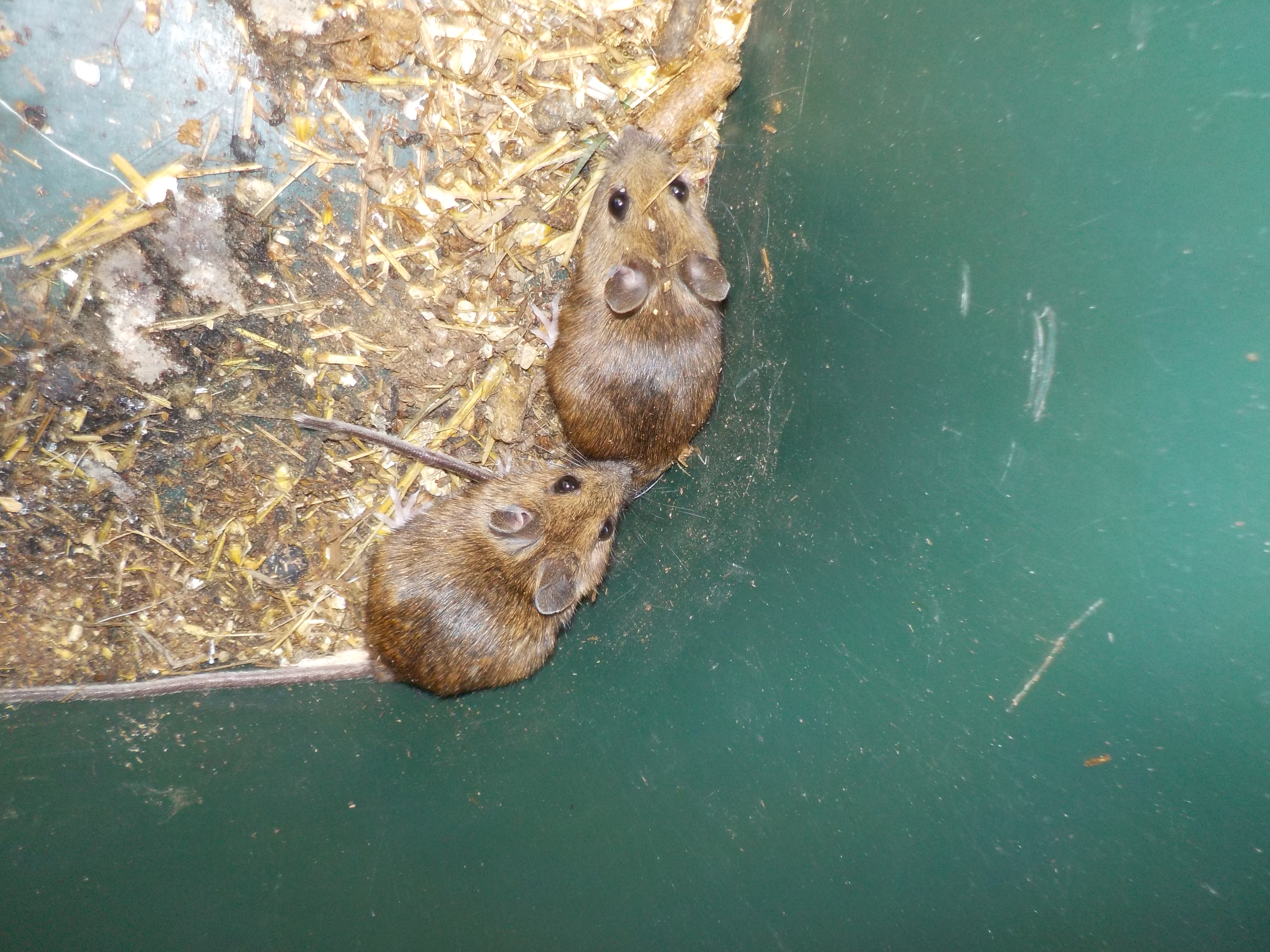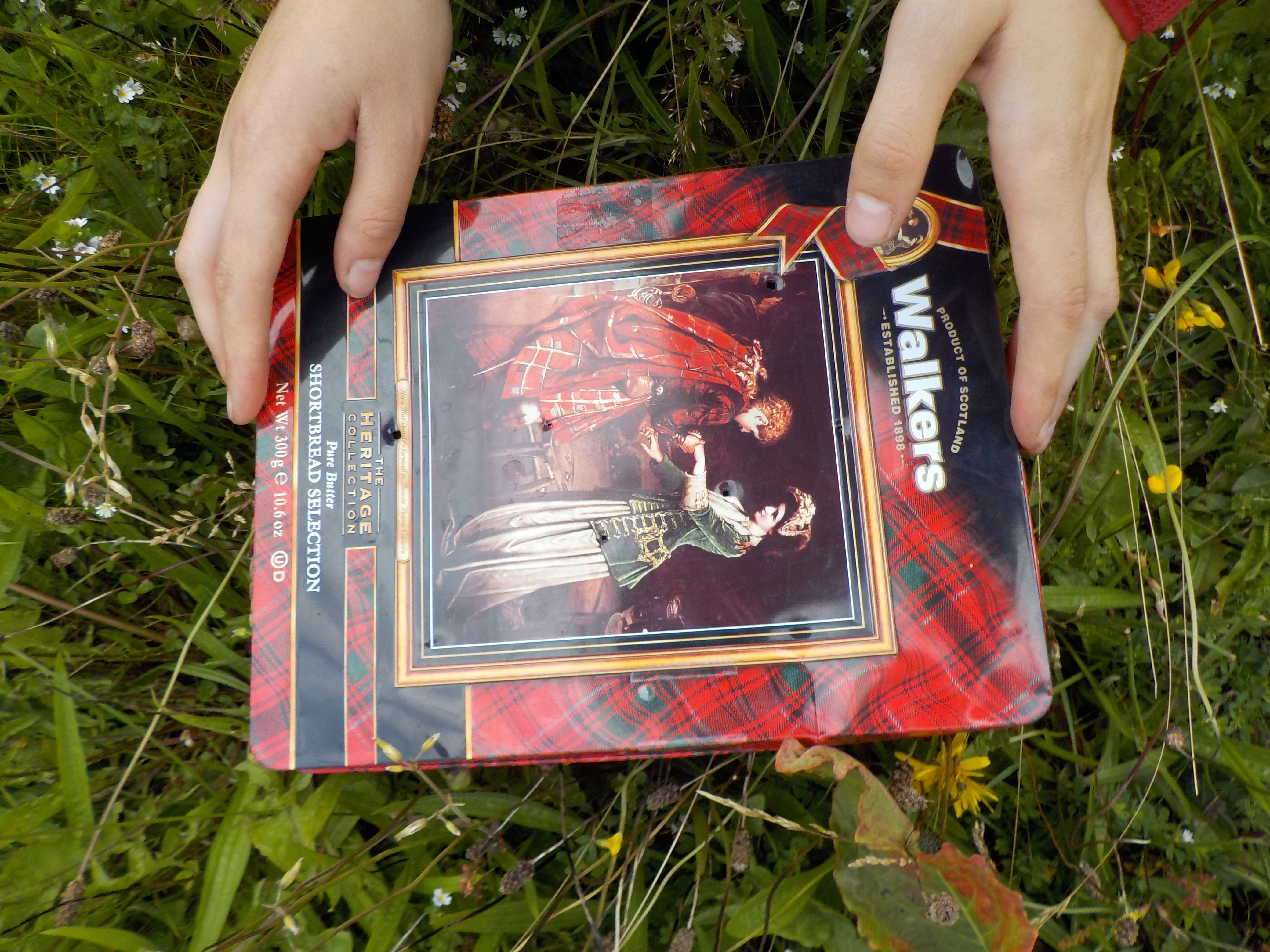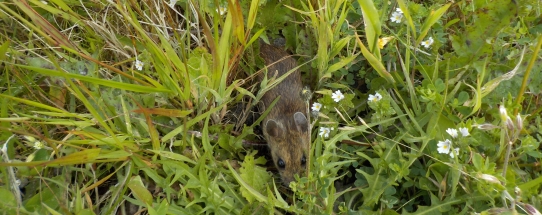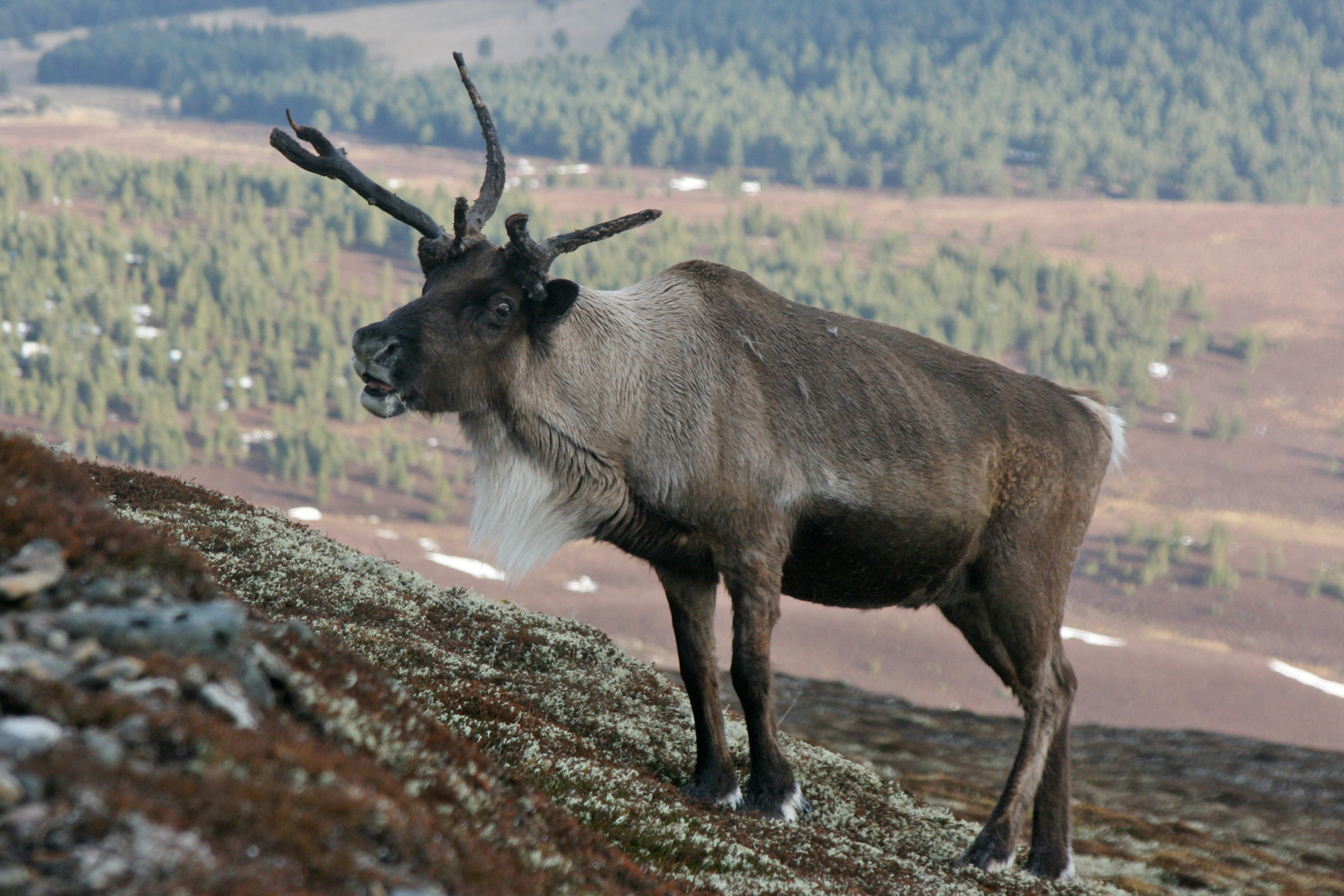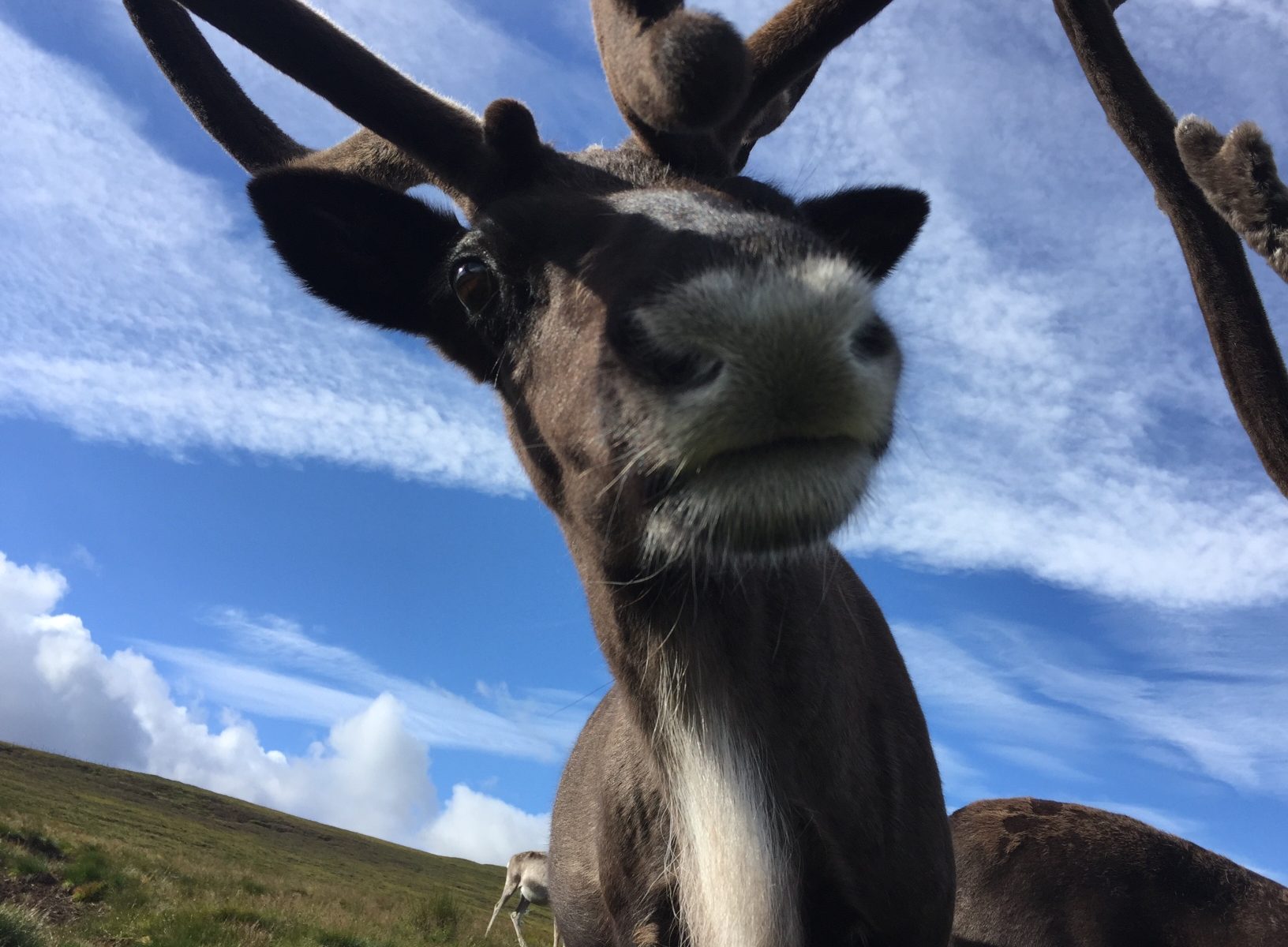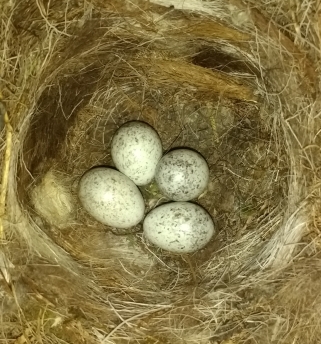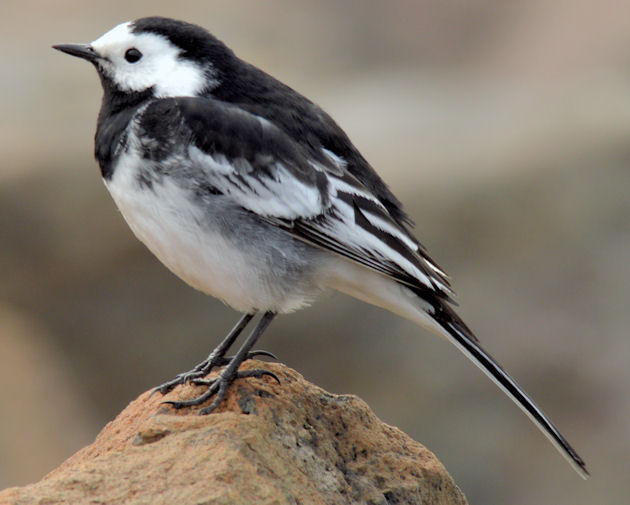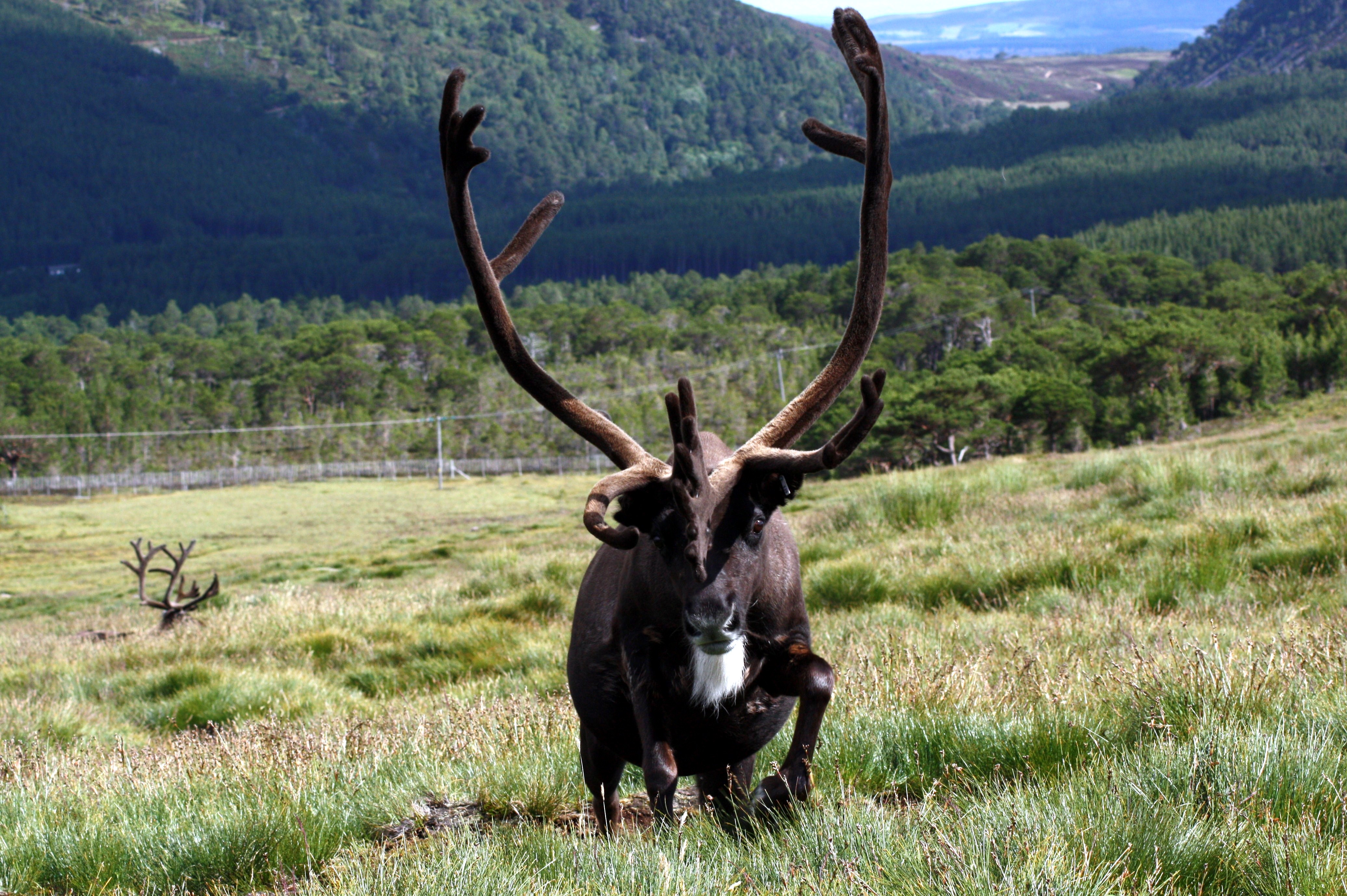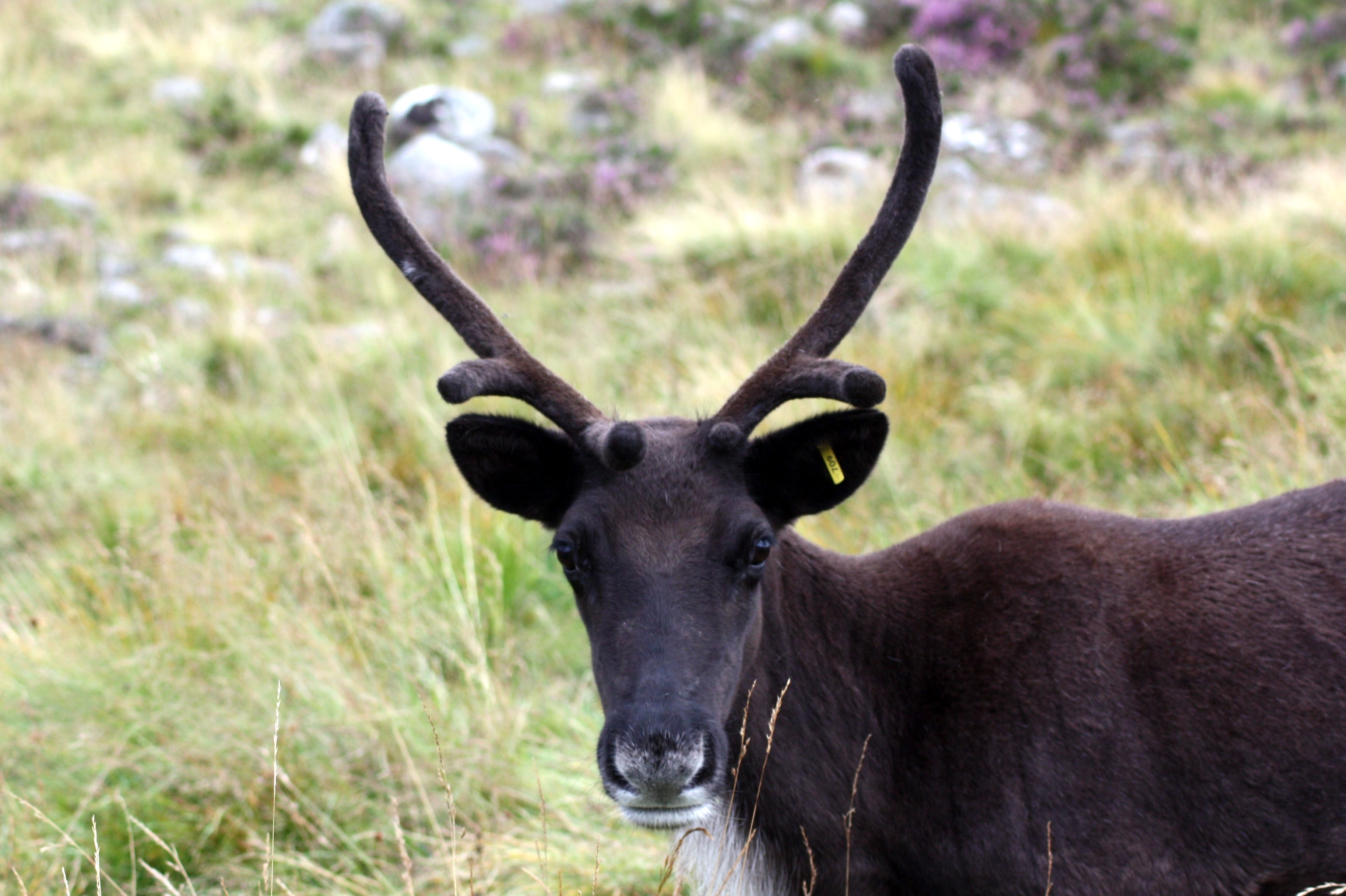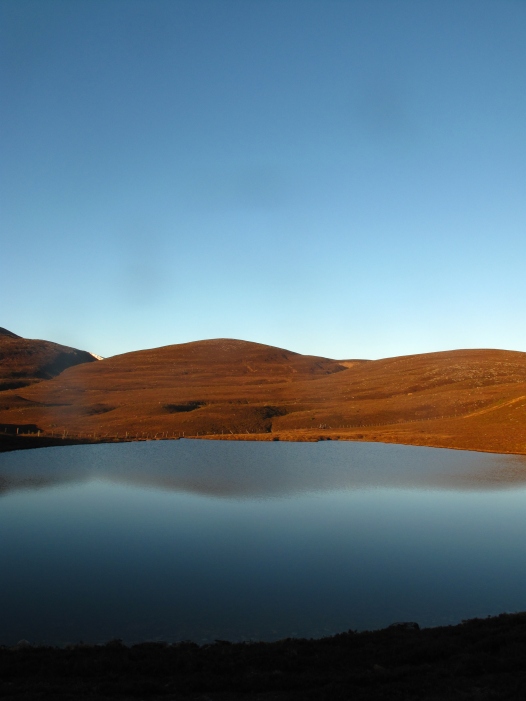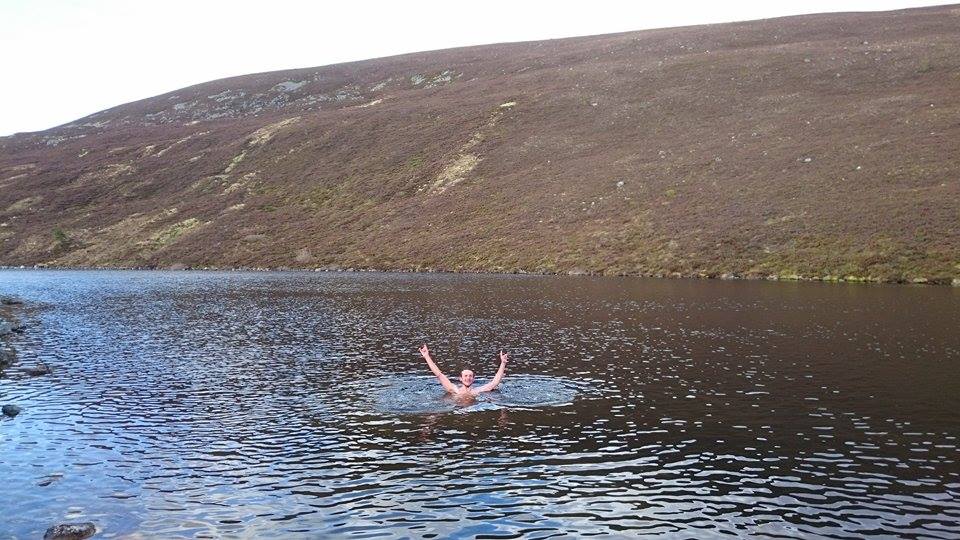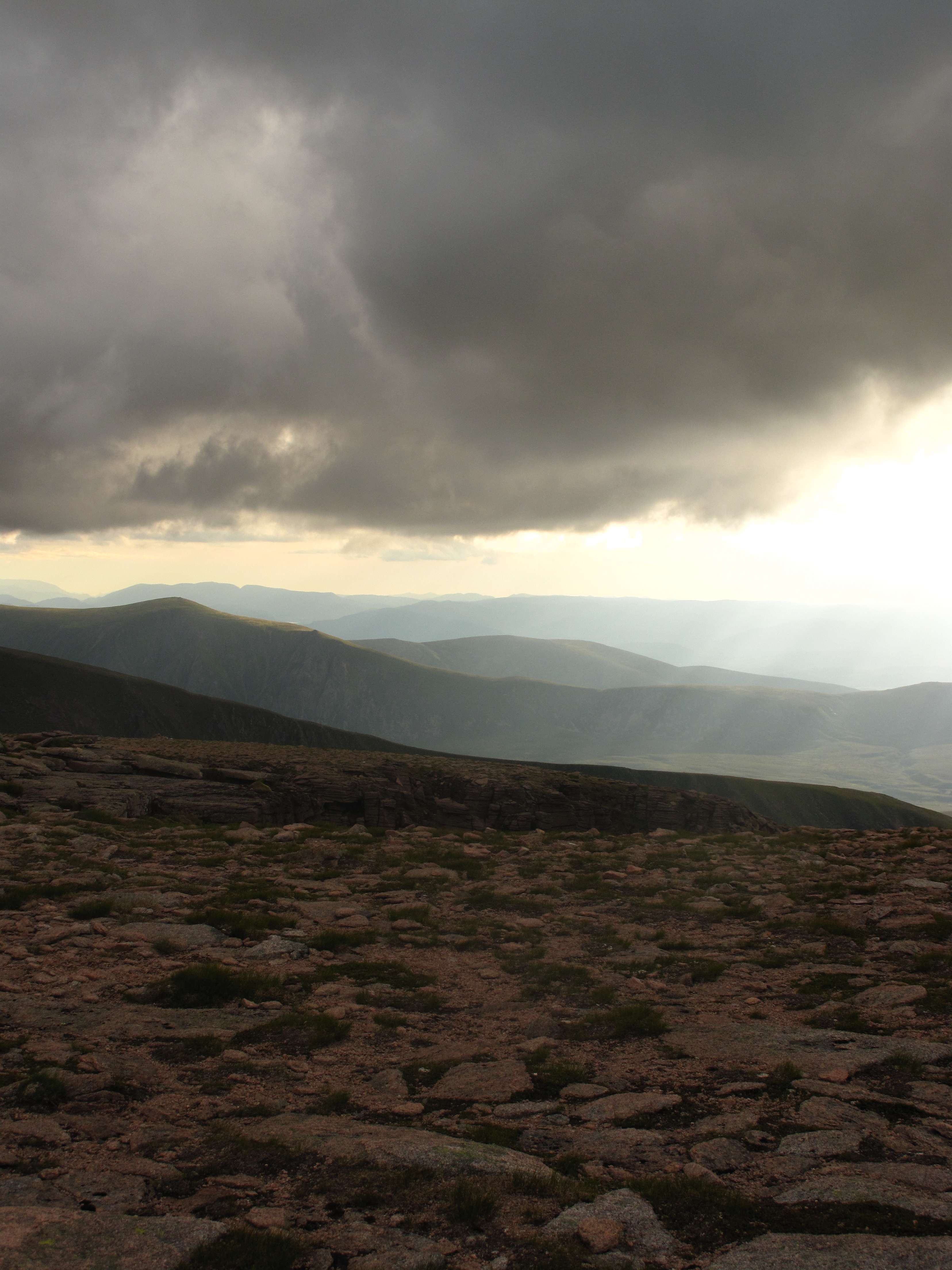All silent on the hill – just the wind, maybe a raven overhead. Then, in amongst the herd, surrounded by soft clicking as the reindeer move around us. Easy to stand with eyes closed and hear how they move, where they are, feeling a timeless sense of ‘reindeer-ness’ that stretches way over the northern lands. Imagining the clicking in a white-out in the winter, wind howling but always hearing where each other are. It’s a reassuring herd message, effortless on the reindeer’s part and made by their hooves.
One of the herd here is leucistic – a white coloured reindeer named Blue (born in a cheese-themed naming year). Blue is also deaf, so doesn’t hear the clicking. One day I saw Blue wandering off alone, and wondered how the herd relates to him, a herd member who doesn’t respond to the kind of reindeer body language and communication that is shared by the clicking. Like, if there’s the need to run, Blue may not hear how the clicking speeds up around him. It’s not a problem here – there’s no danger to run from, and the herd live out their lives to the full and any unusual behaviour is noticed straight away.

The path up to the herd goes over the Utsi bridge – named after Mikel Utsi, the Sami reindeer herder who introduced and established the first herd here back in the 1950s. Before then, the Cairngorms hadn’t seen reindeer for perhaps 1000 years, and way before then, it would have been in the Ice Age climates that the reindeer really thrived across the land. Mikel Utsi died in 1979 and the bridge was rebuilt at that time and named after him. His name is carved into a large granite boulder by the bridge and we pass this boulder many times each day. For me it’s a very special thing – this boulder probably came here with the glaciers as the landscape was formed, and there’s an odd sense of completeness with the Ice Age, the boulder, Mikel Utsi and the reindeer.
Why did I come here? – well, I wanted to understand reindeer better by being around them and amongst them. I’ve had a long term passion with Ice Age cave paintings and carvings, and have dealt with antler (mainly from Scottish red deer) as part of what I do. I work as Leaf Trading Post, supplying antler and prehistoric materials to flint knappers, museums and the like. I also work as Helen Leaf Designs, which is where I create beautiful things inspired by nature and prehistory. I work with antler, wood, silver and bronze. I’m interested in the traditional carving of Inuit and Maori peoples, but I try to work in a way that’s true to myself rather than just copy another culture.
I love working with antler of all kinds, but reindeer antler is special as it ties me in to the prehistoric images that inspire me so much. I’ve learnt so much about reindeer in my week here – kind of like reconnecting with my own Ice Age self. So now, when I carve a reindeer into antler, I understand more of the face, the antlers, the muzzle, and the lines of colour and shape. I can also recall the feel of their fur, the soft calling between mother and calf, and yes, the clicking of the hooves as the herd passes.
Helen


